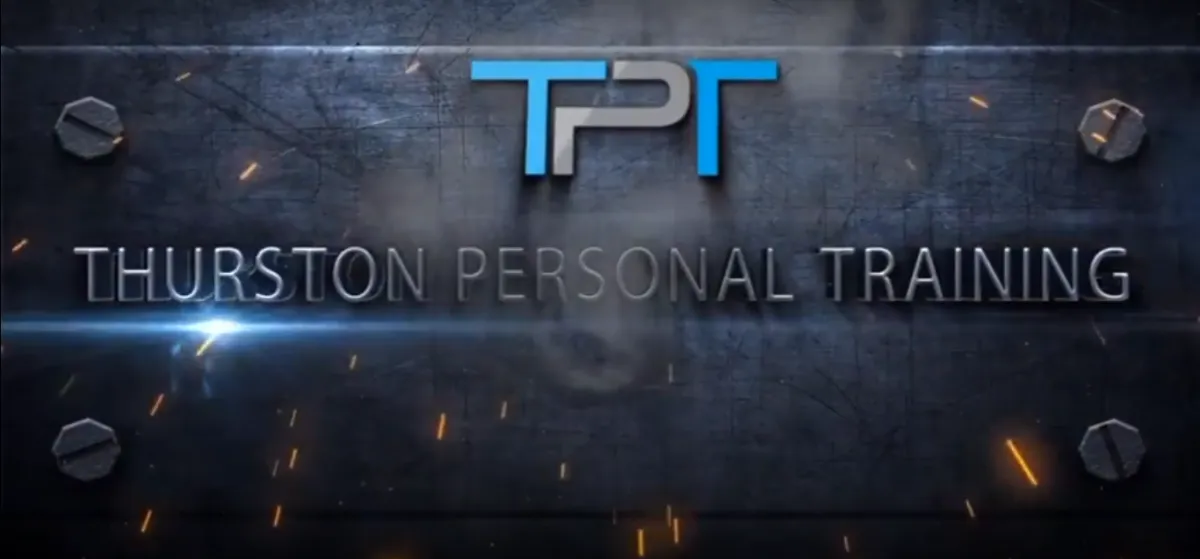Trainer Arizona Fitness Blog

Welcome to Trainer Arizona fitness blog, A divsion of Thurston Personal Training.
Where we're dedicated to providing you with informative and engaging content to support your fitness journey. Whether you're a beginner looking for tips on getting started or a seasoned gym-goer seeking new workout ideas, our fitness articles cover a wide range of topics to help you achieve your goals.
From nutrition advice to workout routines and motivational stories, our personal training blog is your go-to resource for all things fitness. Based in Phoenix, Arizona, our team of experienced personal trainers brings you expert insights and local fitness events to keep you motivated and inspired. Stay tuned for regular updates and join us on the path to a healthier, happier you!

10 Muscle-Building Fundamentals You Need to Master
10 Muscle-Building Fundamentals You Need to Learn & Master
Reentering the gym after a hiatus might feel daunting. Life's demands often push fitness routines aside, leading to a hiatus from exercise. But now, you're determined to regain your momentum, improve your well-being, and set new fitness goals. Top of your list? Building muscle.
Feeling a bit uncertain, you step onto a treadmill for a warm-up stroll while taking in the gym atmosphere. Surrounded by individuals lifting substantial weights, their dedication to muscle building is evident from their impressive physiques. You decide to kick off with a chest workout, aiming to secure an available bench. However, the individuals around seem to be in no hurry, with gym bags and shaker bottles nearby. They exude a sense of permanence. While you're intrigued by their results, you wonder if achieving muscle gains requires such extensive time and commitment.
The answer lies somewhere in between. Achieving a body akin to Arnold Schwarzenegger's demands years of persistent gym sessions and meticulous nutritional planning. Yet, if your aim is not to become a bodybuilding champion, building muscle doesn't need to be overly intricate. With a workout regimen tailored to your schedule and a balanced diet that accommodates your preferences, you can make progress.
Embracing a healthy lifestyle is far from one-size-fits-all, and the same applies to staying active. Ultimately, the most effective workout routine is the one you can adhere to consistently. Whether you're drawn to yoga, cycling, or martial arts, the advantages of muscle building are universally applicable. Strength training enhances your performance in various physical activities and improves your daily life efficiency.
Why Building Muscle Holds Numerous Advantages
The advantages of building muscle extend beyond mere strength enhancement. While achieving personal bests in exercises like squats is undeniably satisfying, the positive impact of muscle development runs deeper and more intricate than the gratification of accomplishment.
Muscle Provides Essential Joint Support
The muscular framework of our body plays a crucial role in safeguarding our joints. It effectively absorbs the shockwaves generated by activities such as running, jumping, and walking, thereby reducing the strain on our knees and hips. Amplifying muscle mass amplifies the force absorption capacity, consequently shielding our joints from enduring long-term harm. Moreover, well-developed muscles facilitate proper joint mobility. When muscles lack the strength to counteract opposing forces, joint vulnerability increases, potentially leading to fractures and tears. This support system significantly augments stability, averting potential accidents.
Increased Muscle Mass Spurs Calorie Expenditure
While the discrepancy isn't as substantial as commonly assumed, elevating muscle mass can boost metabolism, leading to higher calorie expenditure even during rest. Each pound of muscle consumes about 13 calories daily, in contrast to the meager 4 calories burnt by a pound of fat tissue. Although the difference may seem small, it accumulates, particularly during bulking phases where increased food consumption is necessary to accommodate heightened energy needs stemming from intensified workouts.
Enhanced Muscle Strength Reinforces Bone Health
Counterintuitively, subjecting bones to additional stress is instrumental in fostering their growth. Activities such as heavy barbell squats and kettlebell overhead presses contribute to bone sturdiness. As we age, bone density becomes critical to counteract the gradual decline, a process culminating in conditions like osteoporosis. This condition renders bones more brittle and prone to fractures. The formidable relationship between muscle development and bone strength is a potent defense mechanism against such fragility, minimizing the likelihood of fractures due to minor incidents.
Positive Impact on Blood Composition
The acquisition of strength positively influences blood composition by regulating blood sugar levels. Muscles employ glucose and fatty acids for fuel, effectively curtailing elevated blood sugar. Prolonged high blood sugar levels can lead to detrimental health effects, including vessel damage and escalated risks of heart disease, stroke, and nerve complications.
Enhanced Musculature Facilitates Everyday Activities
Muscle growth translates into heightened functionality in various aspects of life beyond the gym. Routine activities become less strenuous as strength increases, eliminating challenges such as breathlessness while climbing stairs or struggling with heavy grocery bags. Engaging in sports, gardening, or outdoor adventures becomes more enjoyable and manageable with a robust muscular foundation, as highlighted by Jahkeen Washington, C.P.T., owner of JTW Fit and the Harlem Kettlebell Club.
Aesthetic Improvement is a Bonus
Building muscle offers evident aesthetic benefits. Improved physique fit, heightened attractiveness, and boosted self-confidence are among the outcomes. These motivations aren't trivial; they coexist with the broader spectrum of health advantages. Pursuing a well-defined physique isn't to be ashamed of; it often acts as a catalyst for adopting healthier habits leading to holistic well-being.
Building Muscle Requires Strategic Approach
While building muscle boasts myriad advantages, it necessitates a deliberate and holistic approach beyond routine gym visits. Effective muscle growth entails pushing muscles to their limits, allowing adequate recovery for subsequent strength gains. Crafting an environment conducive to recovery is pivotal during non-gym hours, encompassing elements ranging from rest and nutrition to active recuperation.
The Concept of Muscle Hypertrophy
Understanding the core tenets of muscle building is paramount. Muscle hypertrophy involves the enlargement of muscle cells, driven primarily by resistance training. This process, fueled by progressively challenging resistance exercises, results in heightened muscle fiber dimensions—both in width and length. It entails not only lifting heavy weights but also implementing strategic training and recovery strategies for sustainable results.
Essential Principles of Muscle Development
Optimize Protein Synthesis: To facilitate muscle growth, prioritize protein consumption. Consuming approximately 1 gram of protein per pound of body weight daily supports optimal muscle development.
Adequate Caloric Intake: Beyond protein, ensure adequate calorie intake to fuel muscle growth. Calculate the necessary daily caloric surplus using a formula based on your weight, resting metabolic rate, and exercise frequency.
Embrace Compound Movements: Incorporate multi-joint exercises like squats, deadlifts, and pull-ups to effectively stimulate multiple muscle groups, fostering growth and functional strength.
Incorporate Heavy Resistance: Engage in heavy weightlifting to challenge muscles and induce growth. Mix rep ranges to balance pure strength and muscle endurance.
Pre-Workout Nutrition: Consuming a blend of amino acids and carbohydrates prior to exercising can enhance protein synthesis and muscle recovery.
Manage Workout Intensity: Alternate between intense and moderate workouts to allow proper recovery and prevent overexertion.
Post-Workout Carbs: Consuming carbohydrates after a workout helps reduce protein breakdown, aiding muscle recovery and growth.
Employ Progressive Overload: Gradually increase the challenge for your muscles to encourage growth. This can include lifting heavier weights, manipulating repetitions, or altering rest intervals.
Utilize Time Under Tension: Extend the duration of muscle tension during exercises by controlling the tempo of repetitions, leading to enhanced muscle stimulation.
Prioritize Sleep: Quality sleep is integral to muscle recovery and growth. Aim for 8 to 10 hours of restful sleep, maintaining consistent sleep patterns and optimizing sleep environment.
Incorporating these principles into your muscle-building journey, whether you're a novice or aiming to overcome a plateau, will provide a structured and effective approach to achieving your goals.
